Pluot and Blueberry Galette
Jump to the recipe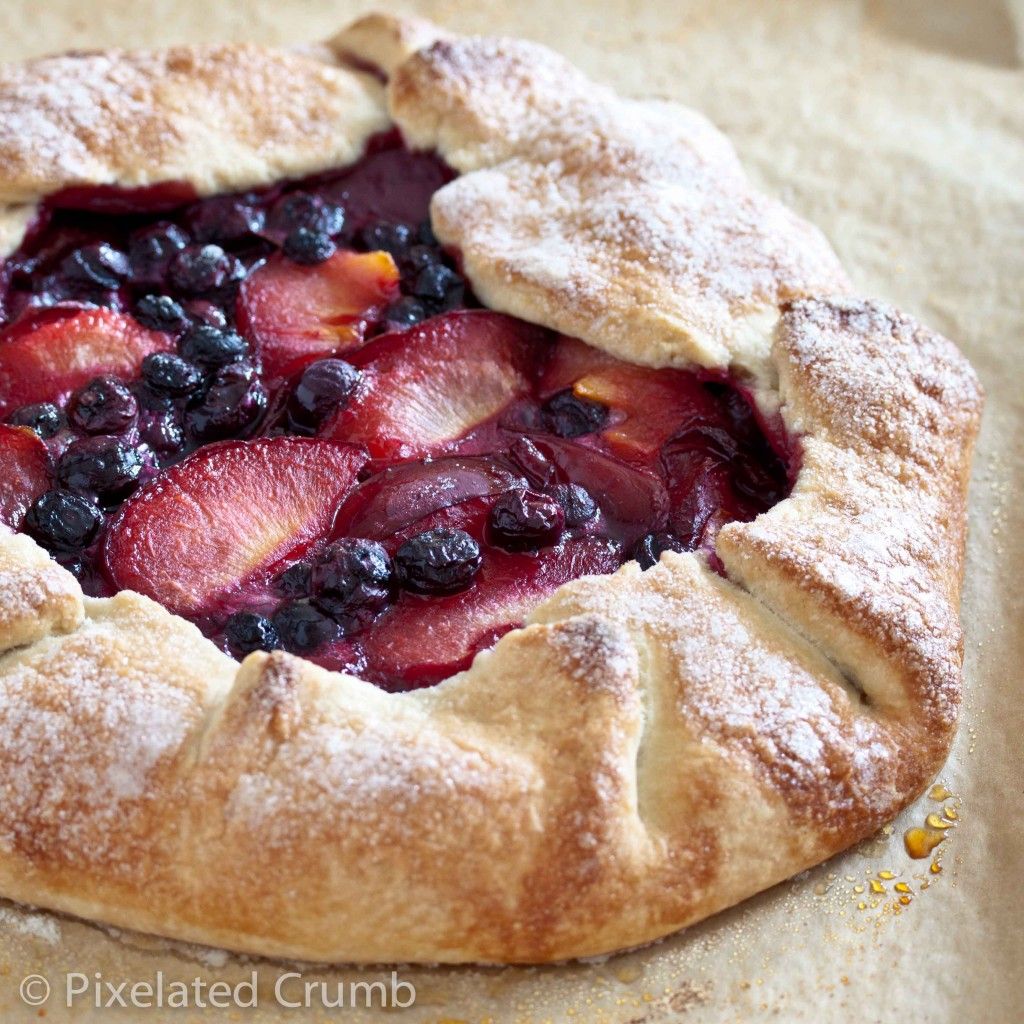
I had never heard of pluots before, but when I saw the bright red color (not to mention their low price) I grabbed a few along with a pint of blueberries to make a galette for some Fourth of July festivities. Yes, I know, we’re halfway through July and the Fourth has long since come and gone. I’m embarrassing late telling you about this tasty tart. I’ll spare you the excuses and divert your attention back to the matter at hand: pluots.

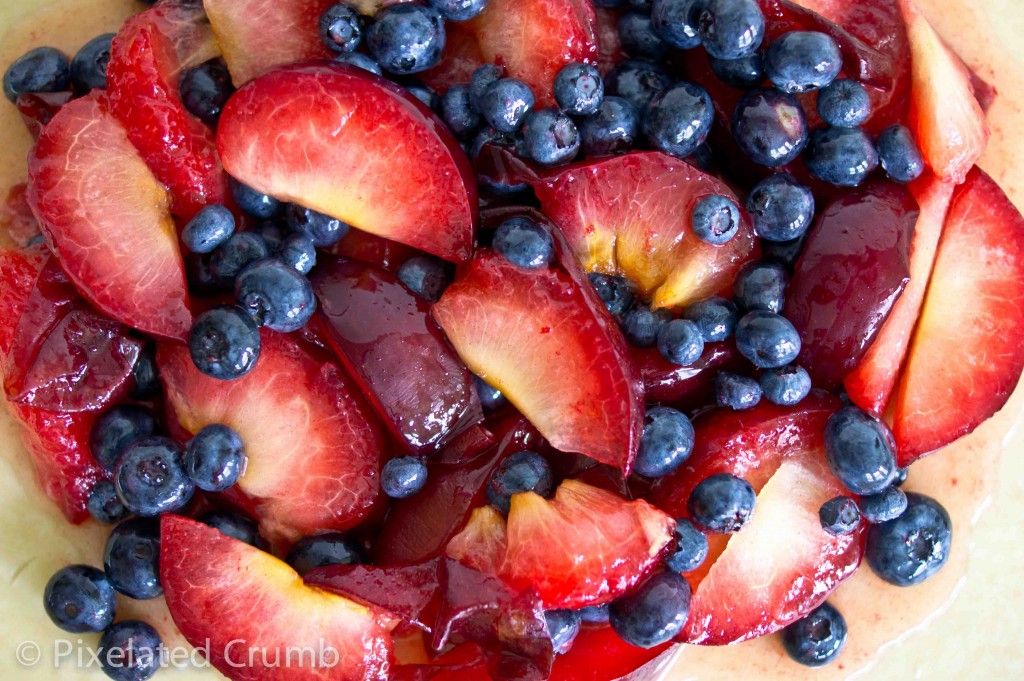
Pluots are part apricot and part plum, but a little closer to the plum side. To be honest, I was a little nervous when I cut the first one open and ate a slice. It was incredibly juicy and a beautiful deep red color, but its pizzazz kind of ended there. It didn’t actually taste like a whole lot.
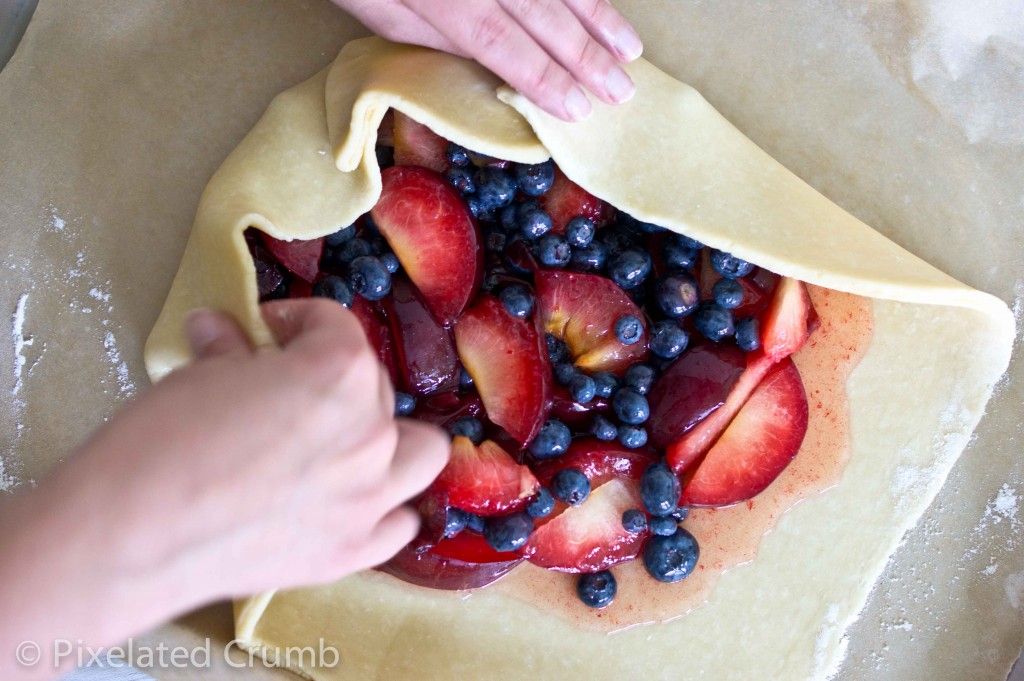
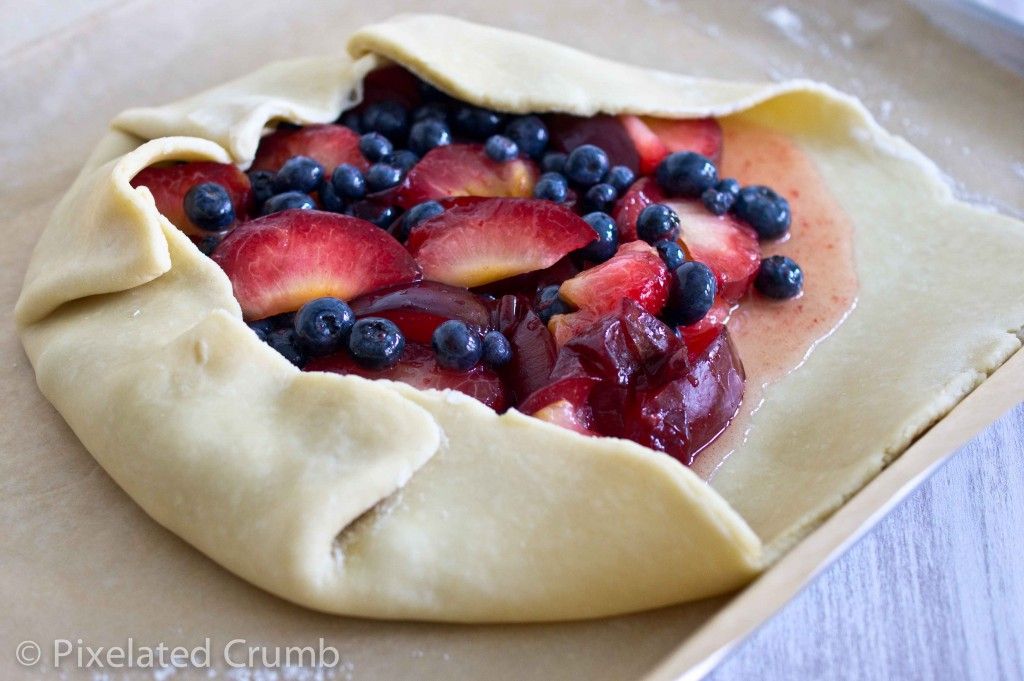
With just a few hours before our friends’ barbecue, I just crossed my fingers and hoped that some magic would happen in the oven. Joseph had made me promise that I wouldn’t spend my entire day off working in the kitchen and as much as I wanted to bring the perfect dessert, I was inclined to acquiesce. The truth was, I didn’t want to spend the day in the kitchen, which is why I had decided that I would make a galette in the first place. They are the perfect, simple dessert. They take such little effort, and yet they’re super tasty and pretty.

In fact, this galette came together in just three hours, and that’s including the time it took me to go to the grocery to get the ingredients and take all these photos. I made the dough and threw it in the fridge so that when I came back from the store with the fruits, all I had to do was slice up the pluots and wash the blueberries, mix in a dash of sugar, roll out the dough, pile the fruit in the middle, fold the edges over, toss it in the oven, and that was it. Oh, and I whipped up some whipped cream just before heading out the door. The one and only annoying thing about it? Slicing the pluots. I hate – and I really do mean hate – slicing stone fruits. It’s just a messy affair. But the good news is that there’s no need to peel the fruit, which is the only thing that I hate more than slicing them.
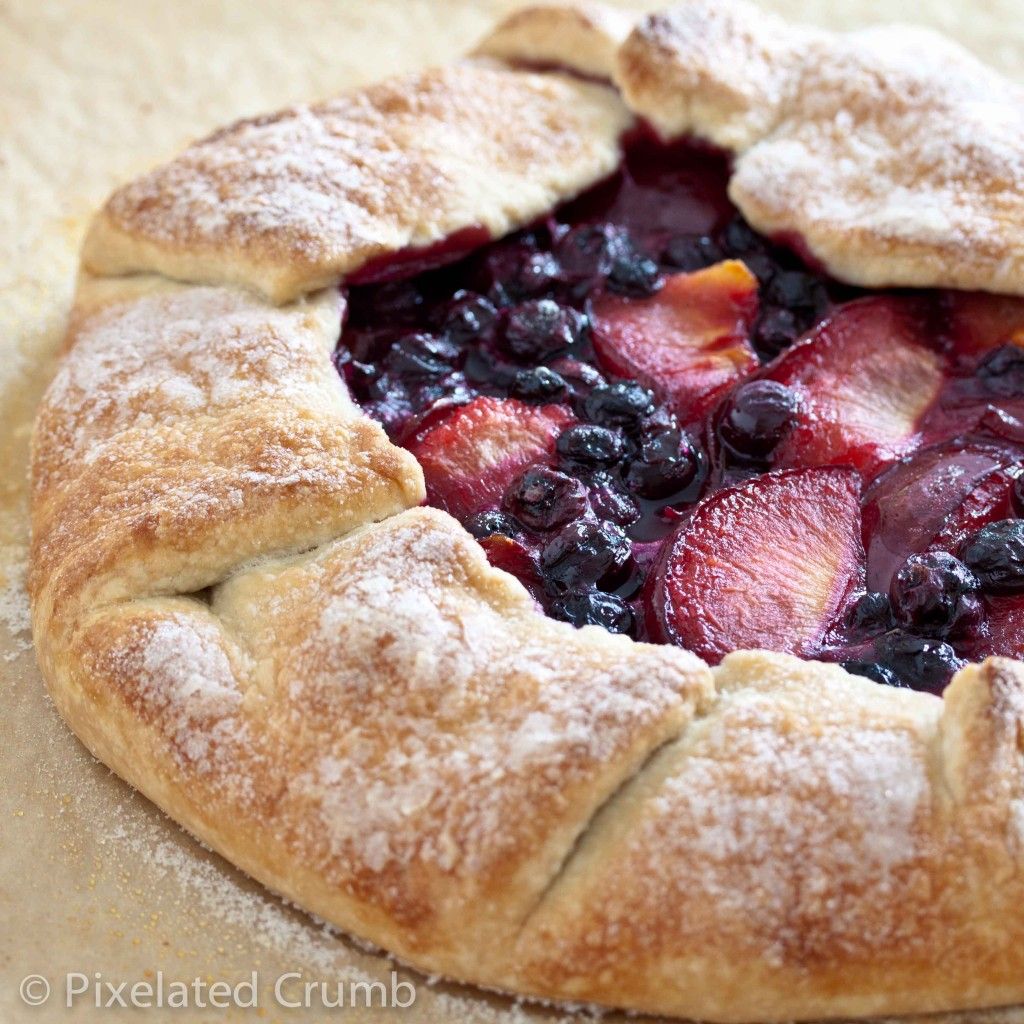
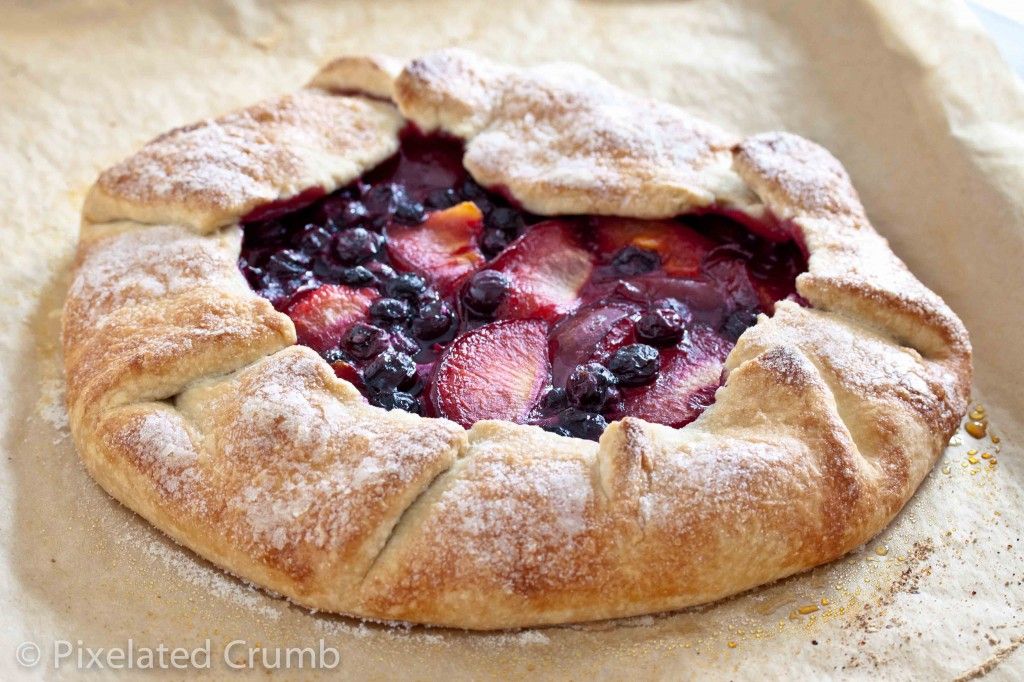
So how did it all turn out? Well, just as I had hoped, what little flavor the pluot had intensified deeply in the oven and married with the blueberry perfectly. The dough – specially formulated by America’s Test Kitchen to stand up to all the juices from the fruit – was buttery and tender, the fruit was tart and sweet and perfectly balanced. All in all, quite the success, especially considering how little work it required.
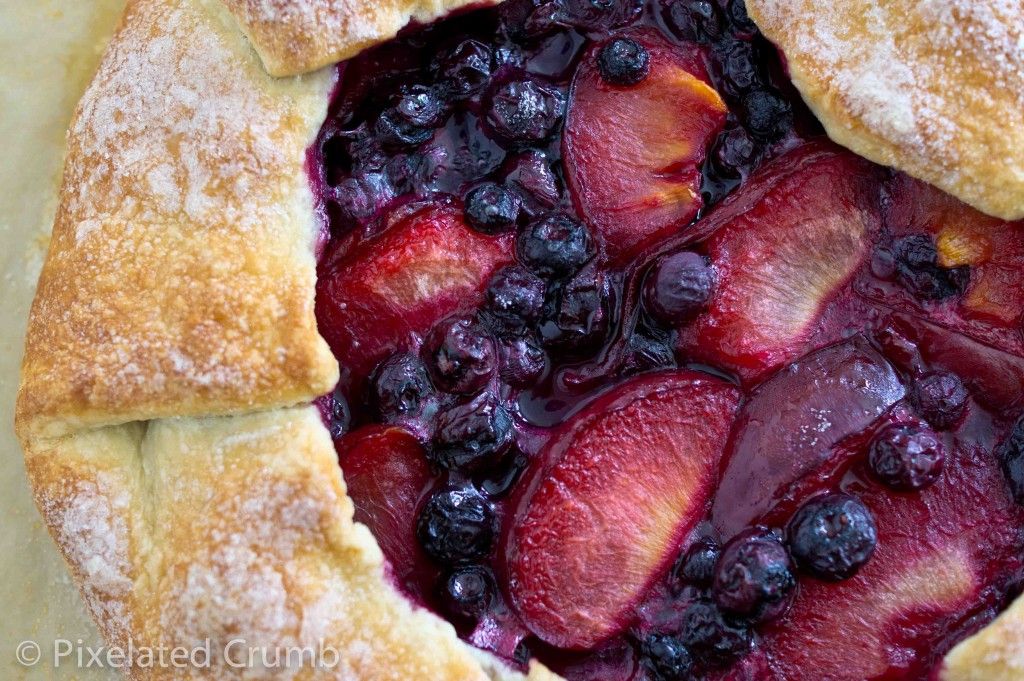
There’s no need to stick to pluots and blueberries for this recipe. We’re in prime fruit season. Head to the market and pick some stone fruit and berries that look good and get cookin!’
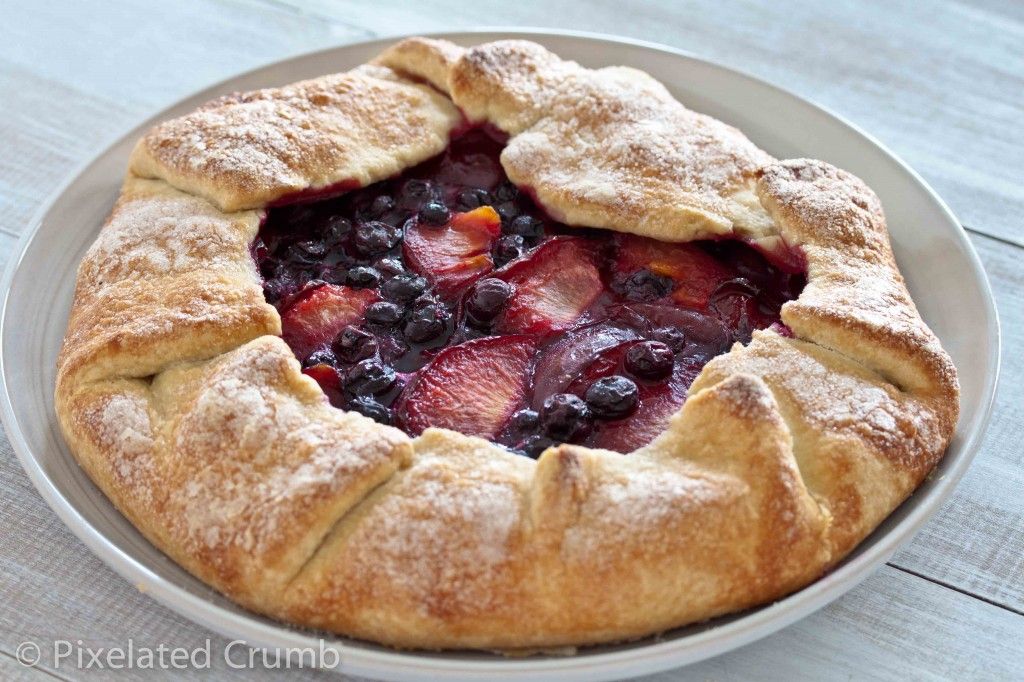
pluot and blueberry galette
Adapted from Cook's Illustrated
The amount of water that the dough will require depends on the humidity in your kitchen. If it's humid, you may need less water, if it's dry, it may need more. Adjust the amount of sugar for the fruit mixture based on how tart the fruit is (using more if the fruit is very tart and less if the fruit is pretty sweet).
The dough can be made ahead and refrigerated overnight or tightly wrapped in two layers of plastic wrap and frozen for up to one week. If the dough becomes soft, sticky, and difficult to work with while you're trying to roll it, chill it until it becomes workable.
Ingredients
For the Dough:
- 7 1/2 ounces (1 1/2 cups) unbleached all-purpose flour, plus additional for work surface
- 1/2 teaspoon table salt
- 10 tablespoons (1 1/4 sticks) unsalted butter, cold, cut into 1/2-inch cubes
- 3 - 6 tablespoons ice water
For the Fruit Filling:
- 1 pound pluots (or peaches, nectarines, apricots, or plums)
- 1 cup blueberries (or other berries)
- 3-5 tablespoons granulated sugar
- 1 tablespoon granulated sugar for sprinkling
Directions
For the dough
- In a food processor, pulse the flour and salt to combine, about three 1-second pulses. Scatter the butter pieces over the flour, then pulse until texture resembles coarse bread crumbs and butter pieces about the size of small peas remain, ten to twelve 1-second pulses. Sprinkle 1 tablespoon water over the mixture and process 1 second; repeat until the dough begins to form small curds and holds together when pinched with fingers.
- Empty dough onto work surface; dough will be crumbly (if dough has large dry areas, sprinkle a tiny bit of ice water over the dry areas and incorporate by gently fluffing entire amount of dough with your fingers). Gather the dough into a rough mound about 12 inches long and 4 inches wide (mound should be perpendicular to edge of counter). Beginning from farthest end, use heel of a hand to smear about one sixth of dough against work surface away from you. Repeat until all dough has been worked. Using bench scraper, gather dough again and repeat. Dough should now be cohesive. Form dough into 4-inch disk, wrap in plastic, and refrigerate until cold and firm but malleable, about 1 hour.
For the filling
- During the last 30 minutes of chilling, prepare the fruit. Halve and pit the pluots and cut into 1/2-inch-thick wedges. Gently wash and dry the berries. Combine fruit in medium bowl (you should have about 3 cups); set aside. Adjust oven rack to lower-middle position and heat oven to 400 degrees.
To assemble and bake:
- If the dough has chilled longer than 1 hour and is cold and hard, let it stand at room temperature 15 to 20 minutes to soften just a bit. On a large sheet of parchment paper lightly dusted with flour, roll the dough to 12-inch circle about 3/16 inch thick, dusting with flour as needed. If the dough sticks to parchment, gently loosen and lift the sticky area and dust the parchment with additional flour. Slide parchment and dough onto a baking sheet and refrigerate until cool and firm yet pliant, 15 to 30 minutes (if refrigerated longer and dough is hard and brittle, let stand at room temperature until pliant).
- Sprinkle the fruit with sugar and toss gently to combine. Remove the baking sheet with dough from the refrigerator. Pile the fruit in the center of dough, leaving 2 1/2-inch border around edge. Carefully grasp one edge of dough and fold up outer 2 inches over fruit, leaving 1/2-inch area of dough just inside of fold free of fruit. Repeat around the circumference of the tart, overlapping dough every 2 to 3 inches; gently pinch pleated dough to secure, but do not press dough into the fruit. Working quickly, brush dough with water and sprinkle evenly with 1 tablespoon sugar. Bake until the crust is deep golden brown and the fruit is bubbling, 50 to 55 minutes. Cool the tart on baking sheet on wire rack 10 minutes. Using offset or wide metal spatula, loosen tart from parchment and carefully slide tart off parchment onto wire rack; cool until warm, about 30 minutes, or to room temperature, about 1 hour. Cut into wedges and serve.